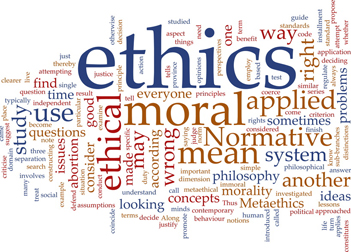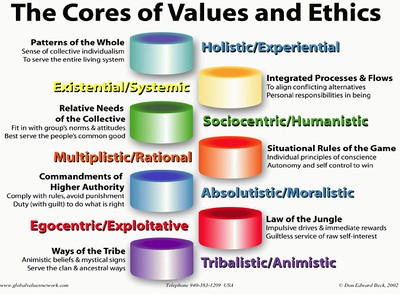The single most important course of loss of productivity is Ethics in a world where familiar markers of behaviour have been demolished by fast-paced social change (Durkheim). When faced with an important decision, people find it hard to choose one over the other. This leads to a paralysis brought about by what Søren Kierkegaard (1813-1855) calls Anxiety (Wikipedia). Unfortunately, all of social science and management will only be of help to us implement the choice once it is made, but they offer little help in making the choice. So how do we know which is the best right way forward? The biggest tragedy is the tragedy of numbers. Saying that “….when faced with such choices 90% of the people chose the left option.” Does not automatically make it the right choice. Simply put, knowing what IS the case so far does not automatically tell us what OUGHT to be (Davide Hume).

Normative Ethics
One can think of two different ways of studying ethics, descriptive and normative. A descriptive study of ethics probably brings us closer to Cultural Anthropology, however a normative ethics deals with what is the right way to act. This leads us to the question of who decides what is right and what is wrong? Is there really an absolute description of what is right and wrong, or is it relative? The Church (BBC)? Or our inner conscience? It seemed like a complex and tangled issue.

Descriptive Ethics
Most college students who take a course in ethics find themselves with no clearer idea of what they should do. Our education is biased towards Science, a descriptive understanding of the world we live in. In contrast, ethics is about which course of action to take. Many if most courses limit themselves to the study of ethics as a descriptive science, rather than explore the possibility of a normative enquiry.
Take a look at a course on Justice at Harvard University……
Our Inner Kompass
At a time when the very fabric of society is changing so deeply and so fast, we can no longer depend on maps to help us navigate the 21st century. After all, by the time we reach a particular point, it would have changed too much. According to the former Director of MIT Media Labs, Joi Ito, what we need is a compass and not a map.
- The first step of acquiring an Inner Kompass is to discover how our values influence our behaviour, not in an abstract way, but through the realization that when we choose coffee over tea, its because for some reason we value coffee more.
- The second step is to recognize the distinction between Wants and Needs. While being thirsty may refer to a need, I may experience it as I want a coke. Unfortunately, we don’t always recognize the distinction between the two. This makes us think that we need a coke.
- Once we have achieved this conceptual distinction, we engage in the WORK of teasing apart the needs from the wants. For this process, we will appropriate the term Deconstruction from Jacques Derrida (It’s an appropriation because we are using the word in a new, although related, context from what Derrida used it.). This is achieved through the application of mindfulness.
- This WORK shows us how we have constructed our way of looking at the world and our way of responding to it based on culture and past experiences. Such constructions. called Gestalts, are not easy to deconstruct and during the work of deconstruction, one may experience what the Psychoanalysts call Resistance and when one gains the insight that there may be other ways of achieving the same thing, it may be accompanied with a Catharsis, a release of energy.
- But the aim of WORK is to increase a sense of freedom and to give the person a greater range of choices to choose from and an experience of freedom. The person is encouraged to make conscious choices about life, each time a choice is made it strengthens the connections between values and actions. Making value-based choices is like exercising a muscle it makes you stronger.
- The WORK of Deconstruction happens in a conversational space (discursive space) where you can talk about anything. This is made possible because of a shared contract where both parties understand the rules of engagement. They are not set in stone but its often helpful to start with an explicitly stated code.